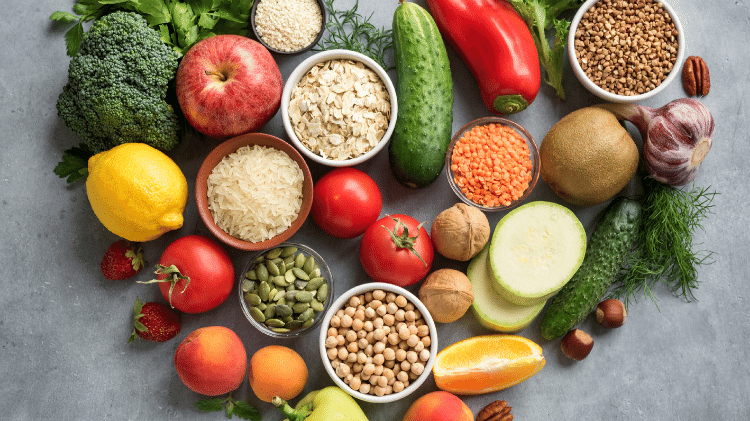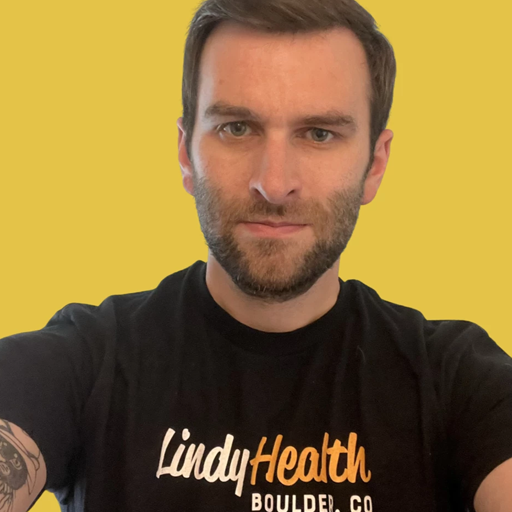“Volume eating” is perhaps less of a dietary choice and more of an eating strategy geared towards increasing the amount of lower-calorie foods you consume.
Naturally, this type of eating has also turned into a sort of ‘fad’ diet called “volumetrics.”
This diet is essentially the same practice as “volume eating” – eating nutritionally dense, low calorie food over the long-term to help you lose weight. This type of eating does not require meal timing, controlling protein/fat intake, or counting portion sizes.
As a result, there is a more ‘unstructured’ eating approach that can be easily followed by anyone.
The focus is on avoiding high-energy-dense foods (carbohydrates like pasta, white rice, and corn), while focusing on low-energy-dense foods (fruit, leafy greens, egg whites, fish, oats).
This is not a way of eating that restricts fat, protein, or carbohydrates explicitly.
Instead, by putting emphasis on good food choices, you can help feel full for longer while nourishing your body with nutrients that it needs.
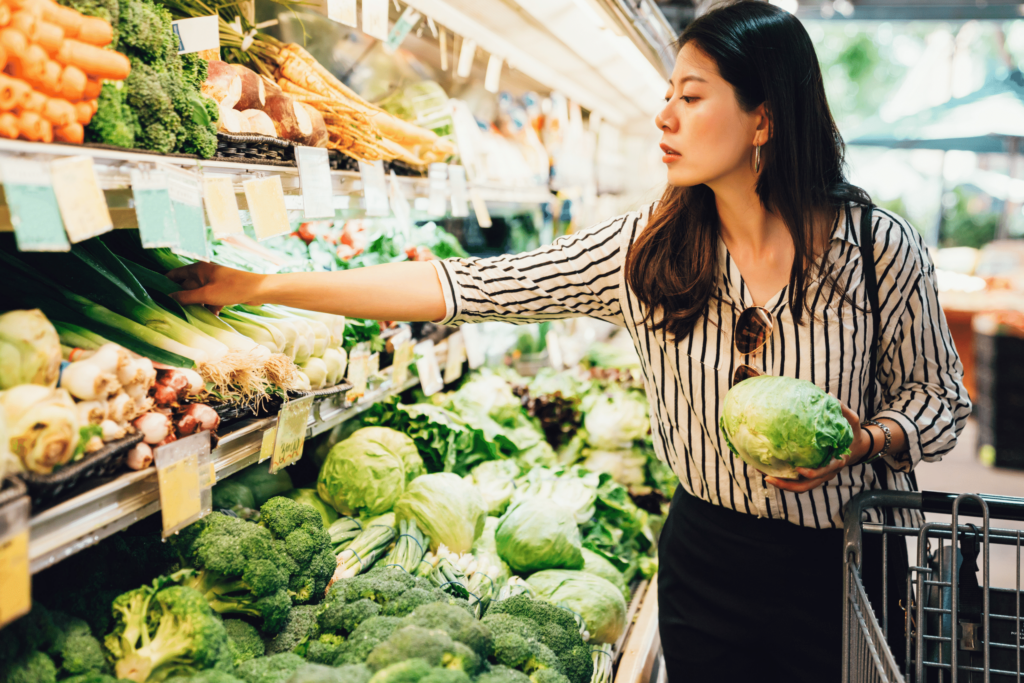
Of course, while all “whole foods” can have their place within the context of a healthy diet, those looking to lose weight may be more interested in high volume, low calorie foods to satisfy hunger while on a diet or cut.
Sample Shopping List
We’ll go over some of the more specific inclusions on this list below, but planning a shopping list or meal plan surrounding high-volume, low calorie foods is pretty easy.
The bulk of your shopping list should be produce.
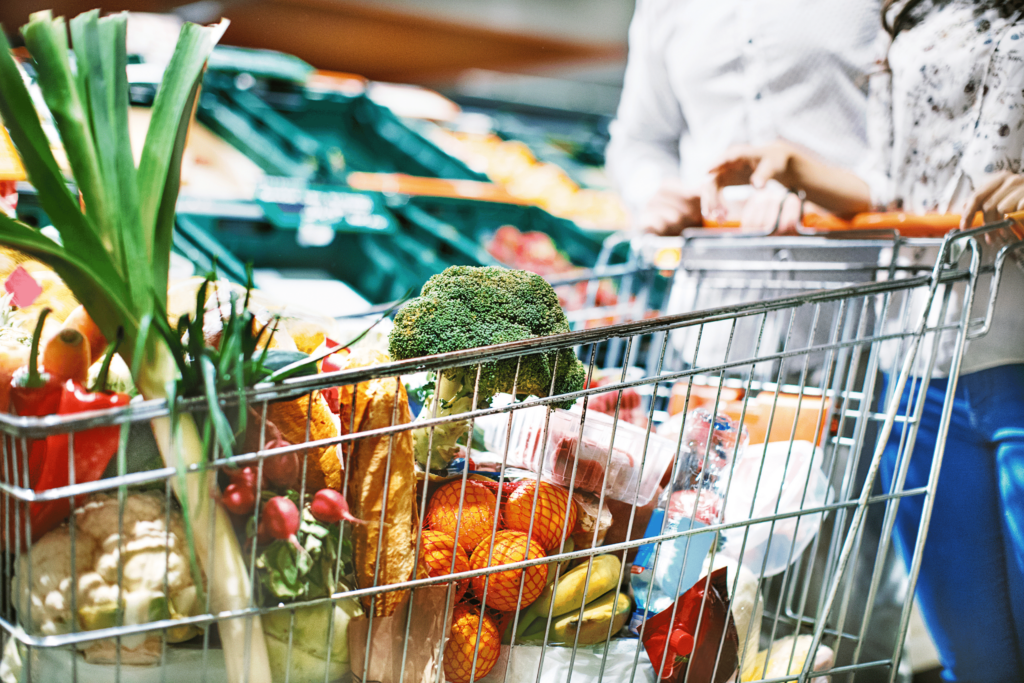
You’ll also want to avoid fatty meat, refined carbohydrates, processed food, high-fructose fruits, and cooking oils. To avoid the use of cooking oils (namely seed oils), you can utilize water or vegetable broth for pan frying.
Some good items to include would be:
- Lean, skinless protein (chicken breast, extra-lean grass-fed ground beef)
- Wild-caught salmon, cod, or tilapia
- Egg whites
- Lactose-free yogurt or cottage cheese
- Low-fructose fruit – apricot, kiwi, blueberries, raspberries, strawberries, cantaloupe, honeydew, plums, and peaches
- Vegetables (fresh + frozen) – leafy greens, zucchini, cucumber, asparagus, carrots, brussels sprouts, bell peppers, broccoli, cauliflower
- Oats (steel-cut, no instant oats)
- Shirataki noodles
Sample Meal Plan (One Day of Eating)
A day of eating utilizing this shopping list could look like:
- Egg white omelet (spinach, bell peppers) for breakfast paired with berries; lactose-free Greek yogurt and chicken breast salad as lunch; vegetable soup (carrot, squash) with steamed veggies (broccoli) for dinner.
This type of daily eating ensures you can still meet your protein requirements by consuming high protein foods like Greek yogurt and chicken breast, while still drastically reducing the amount of calories you consume by cutting out ‘dense’ foods like starches and refined grains.
We also have written more at length about how to devise a proper meal plan.
Some foods of note include:
- leafy greens (great for scrambles, omelets, and salads as a side for lean protein).
- egg whites (contains the high protein content of eggs without the calories from the yolk).
- skinless chicken breast (excellent main protein source).
- shirataki noodles (replace high-calorie wheat noodles in Asian-inspired dishes or pasta dishes).
Leafy Greens
Perhaps the most obvious choice, leafy greens are the number one way to feel satiated and full while eating on a diet or cut.
Not only are they nutritionally dense (minerals, B-vitamins, flavonoids, antioxidants), but they also support muscle function, cognition, and a healthy microbiome.
Spinach, for example, contains around 20 calories per cup. In this same miniscule 20 calories, you get 5 grams of protein, magnesium, iron, calcium, vitamin A (100% DV), potassium, and vitamin K.
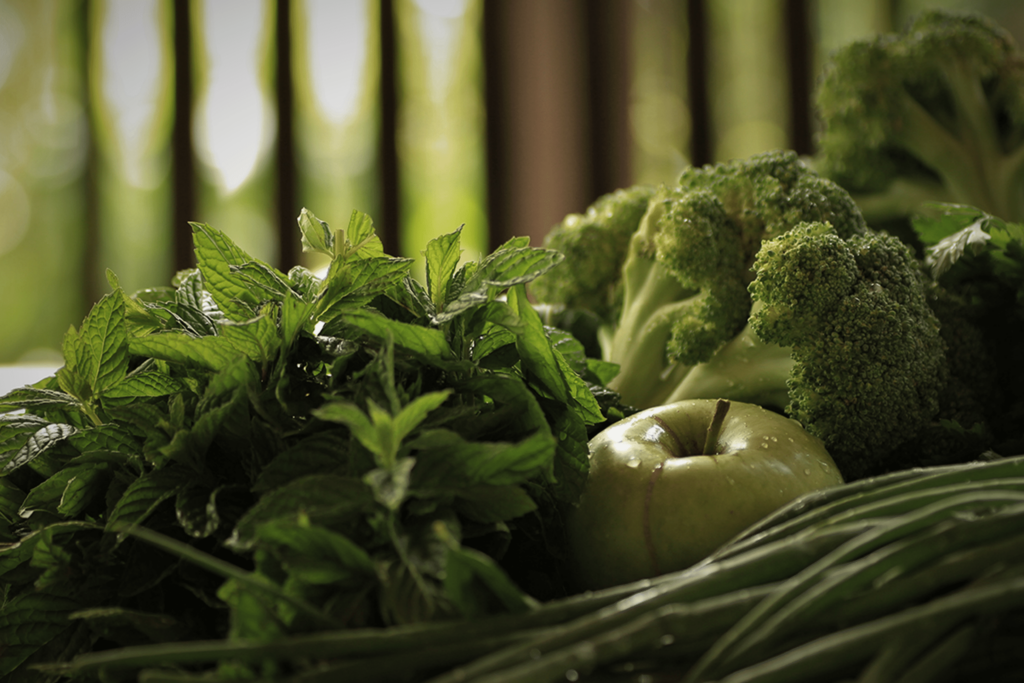
Leafy greens like arugula are also a great option, and can be easily incorporated into a dish like scrambled eggs or utilized as a side salad with salmon or chicken breast.
Shirataki Noodles
Perhaps less commonly known when compared to other foods on this list, shirataki noodles are also commonly referred to as “miracle noodles.”
These gelatinous, shimmering Japanese noodles can easily be used in recipes that call for their calorically dense counterpart – meaning you can still easily enjoy a stir fry while on a diet, deficit, or cut.
Shirataki noodles are made of glucomannan, a specific type of fiber found in the ‘konjac’ tuber.
Konjac glucomannan is high-viscosity. As such, it is known to promote satiety, lower blood glucose levels, lower serum cholesterol, and promote healthy bowel function.
In other words, Glucomannan is a soluble fiber and absorbs a lot of water content. Noodles made from konjac are typically 3% fiber, 97% water. An 8 ounce serving usually only contains around 20 calories, while boasting 6 grams of soluble fiber.
Many studies on konjac or glucomannan specifically look at incorporating it into a diet already composed of wheat-based products.
However, when examined independently, we can clearly see glucomannan as having the ability to “prolong digestion time and slow the rate of absorption of nutrients from the small intestine, resulting in stabilized low postprandial blood glucose levels.”
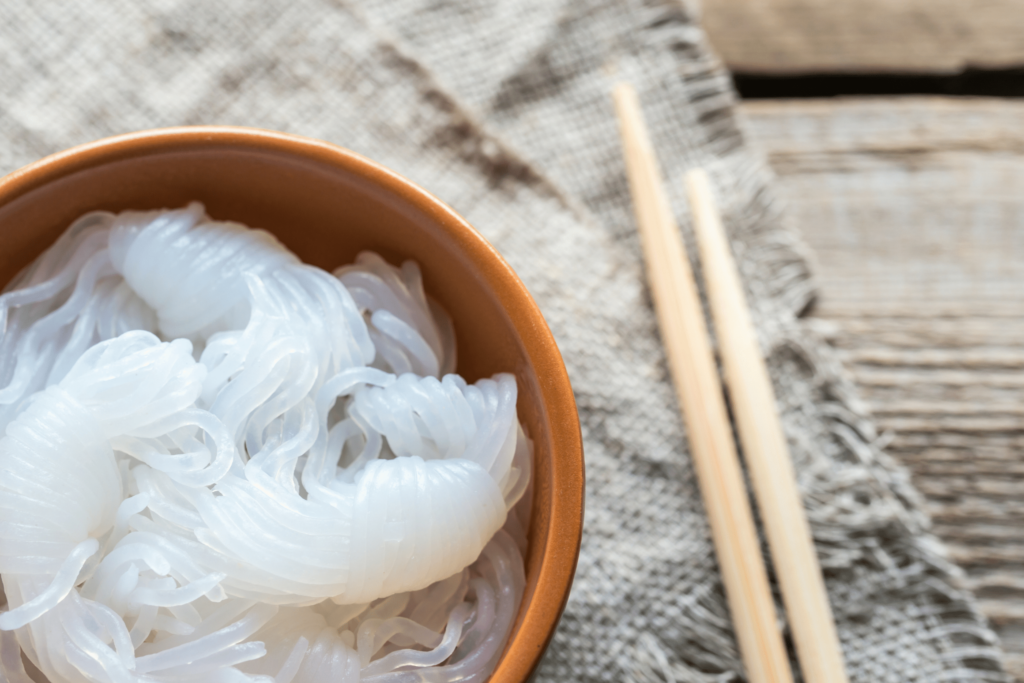
Konjac can help stabilize blood glucose levels when consumed, and this results in a lower ‘spike’ when compared to those eating refined wheat noodles or glass noodles.
Other studies that isolate glucomannan as a
Is High-Volume, Low-Calorie Eating Safe?
Considering that the Volumetrics Diet, developed by Barbara Rolls, has now been ranked the number one weight loss diet in 2022 – you might be considering high-volume, low calorie eating as the solution to your weight loss journey or cut.
This kind of dietary adjustment is perfectly safe, since it doesn’t restrict calories, and prioritizes healthy eating by making smart choices. Opting for nutrient dense foods like vegetables, lean proteins, egg whites, and select whole grains (oats) provides health benefits while ensuring satiety and feelings of fullness for longer.
This type of ‘diet’ is inherently safe and effective, and studies reinforce that high-volume, low-calorie eating helps people develop a healthy perspective towards eating, while having the most effective weight loss results when compared to other diets. This weight loss was sustained after a period of years, and did not return or fluctuate.

By cutting out processed foods, fatty meats/deli slices, refined grains, refined sugars, and seed oils – your diet is already healthier than the vast majority of people eating the Standard American Diet.
- Peter MD Review 2024 – Is it a Good TRT Option? - February 27, 2024
- 5 Best SARM Companies - February 1, 2023
- Movement, Exercise, and How to Make it Stick - January 11, 2023



